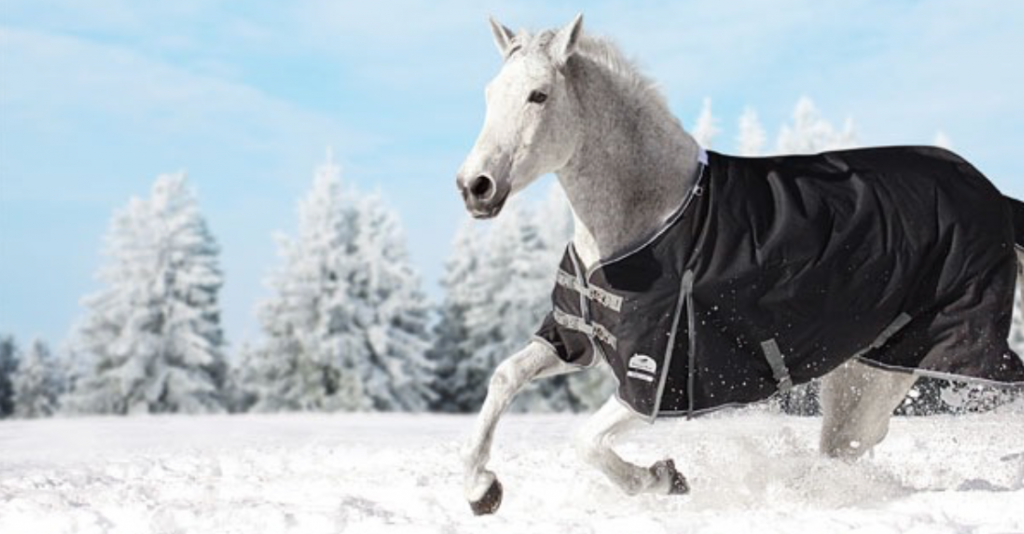Winter Blanket Guide
Posted by Lynnsy Diekman - Saddle Up on Nov 9th 2022
Colorado has winter knocking at its door! We have already seen severe temperature drops as well as some storms rolling in. With the cold weather, many people have started blanketing their horses. We do understand blanketing is a very controversial topic, but many people do choose to blanket during the winter. We don't want to get into who is right or who is wrong, but we do want to provide facts and guidelines when choosing a winter blanket.
There are so many options when it comes to blanket shopping that it can be very overwhelming. Here are some tips when you shopping for one to help you determine sizing, thickness, materials, and more!
How do you measure your horse for a winter blanket?
When measuring for a winter blanket, you want to make sure your horse is standing square and facing forward. You can then take a string and start by putting the string in the center of the horse's chest. You will then take the string along the side of the horse and back to the base of their tail. Make sure to pull the string tight and that the horse is still standing straight forward. You will then mark that spot on the string and measure that piece from the chest to the tail. That will you give the measurements for a winter blanket.
Different blanket types:
There are several different styles/types of blankets out there. Each one is designed for different temperatures and climates, so you want to make sure you are choosing the right one for your current needs.
A cooler is a soft, fleece material that is designed to wick moisture. Its main purpose is to aid in drying a sweaty horse. It can be used as an extra layer, but it is not like a winter blanket. A cooler would be for when your horse works up a sweat, but it is cold or even snowing outside and you don't want them to get sick. The cooler absorbs that moisture and dries them off.
A stable blanket is a lighter weight blanket or even one that is quilted. This is designed for horses that are in the barn or even trailering. It would not be the best choice for wet, heavy snow, but it is a nice option to keep them clean in the barn.
Turnout blankets are going to be your more heavy duty option. They are weather resistant and provides protection from cold temperatures and moisture. They do have different weights and outer deniers, but they will be the best option for horses outdoors that are exposed to the elements.
Denier and Poly Fill?
Denier is going to be the strength of the outer shell of the blanket. This is determined by the thread's thickness. The bigger the number, the thicker the blanket. For example, a 420 Denier is a light weight blanket and a 1680 Denier is heavy/super tough.
Poly Fill refers to the blanket's warmth. It is measured in grams and designates how much heat it will provide for your horse. Again, the smaller the number the more light weight it is and the bigger the number the more warmth it provides. For example, 100 Gram Fill is considered light and 400 Gram Fill is considered super warm.
There are many blanket add ons that you can get as well, like a neck cover. The biggest thing to remember is you know your horse best, so follow what you feel is right. It is always helpful to talk to a vet regarding your particular horse and if they feel it needs a blanket. If the weather is too warm, you can do more harm by blanketing your horse. So it is just important to evaluate the situation and your horse's condition before blanketing them. We hope these tips and guidelines help with any blanketing questions you may have! Always feel free to reach out with any questions or check in with your vet for more insight.

